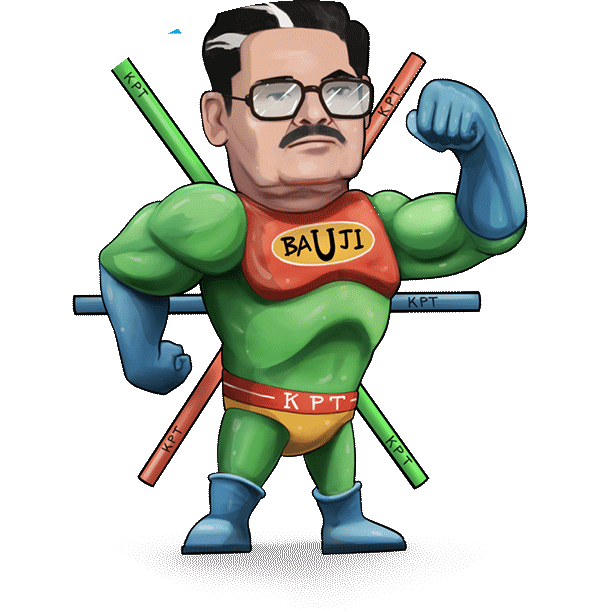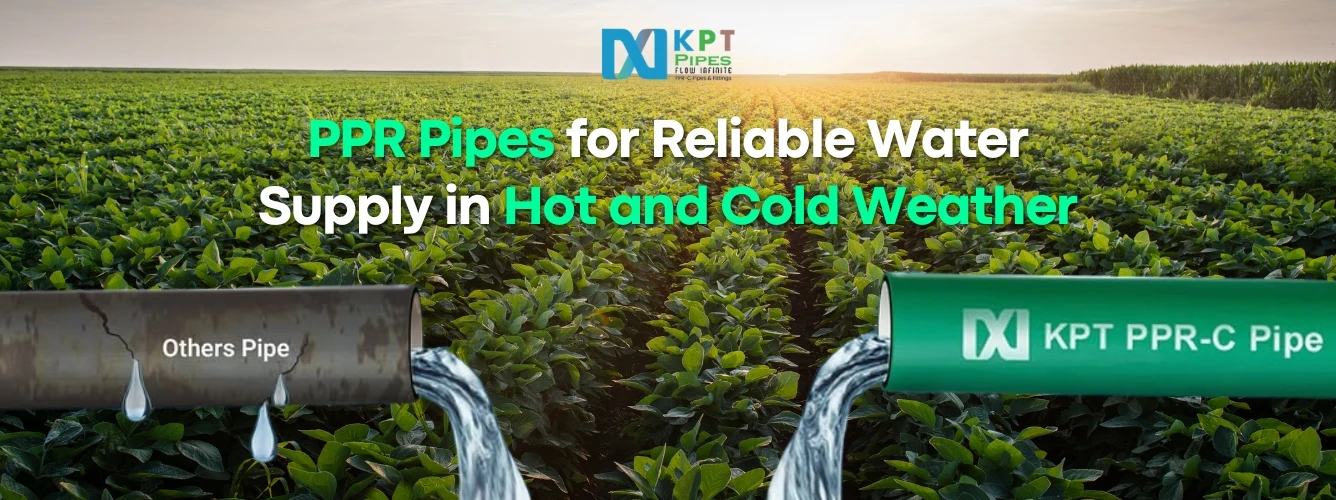India’s diverse climate demands versatile plumbing solutions that perform flawlessly across extreme temperatures. Whether in regions facing chilly winters or tropical areas with scorching heat, efficient water supply systems rely on pipes designed to withstand weather variations. Among these, PPR pipes have become the preferred choice for pipes for cold water and pipes for hot water, thanks to their resilience, durability, and thermal stability.
For homes, industries, and agriculture alike, a dependable water system is essential. PPR pipes offer exactly that—maintaining consistent pressure, preventing leakage, and ensuring reliable water flow regardless of the season.
Table of Contents
ToggleWhat Makes PPR Pipes Unique?
PPR (Polypropylene Random Copolymer) pipes are crafted using advanced polymer technology that grants them exceptional performance across temperature ranges. They possess a smooth inner surface that minimizes friction, preventing scale formation and guaranteeing efficient water flow. These pipes do not react to minerals or impurities, making them ideal for potable water systems.
Unlike ordinary plastic or metal pipes, PPR pipes retain their shape and strength under both hot and cold conditions. This is why they are the most recommended pipes for cold water in winter-prone zones and pipes for hot water in residential and commercial spaces like hotels, hospitals, and industrial plants.
Performance in Cold Weather
In areas facing sub-zero temperatures or cold conditions, standard pipes often contract and become brittle, leading to cracks and leaks. PPR pipes, however, are designed to endure extreme cold. The molecular structure of polypropylene random copolymer prevents brittleness, maintaining elasticity and strength even when temperatures fluctuate.
Their high thermal resistance ensures that pipes for cold weather don’t freeze easily and continue supplying water seamlessly. Homeowners and builders prefer PPR pipes because they minimize downtime caused by pipe bursts or slow water flow during winters.
Key benefits in cold weather:
- Low thermal conductivity prevents freezing.
- Enhanced flexibility reduces stress under pressure.
- Long lifespan minimizes maintenance even in cold climates.
Performance in Hot Weather
Hot climates put plumbing systems through a different kind of stress—thermal expansion, corrosion, and leakage due to heat sensitivity. PPR pipes outperform traditional systems by maintaining high pressure and structural integrity at temperatures up to 95°C. This makes them ideal pipes for hot water in households, laboratories, and hotels.
Their chemical resistance ensures that no harmful substances leach into water—even at high temperatures—preserving water purity. That means consistent, safe water for bathing, cleaning, and industrial processes year-round.
Advantages in hot weather:
- Resistance to scaling and corrosion.
- Zero leakage under high pressure and temperature.
- Smooth internal walls for uninterrupted water flow.
Role in Maintaining Reliable Water Supply
Reliability defines modern water systems, and PPR pipes stand out for their ability to sustain consistent pressure and performance. They allow seamless integration into plumbing networks—whether for residential apartments or large industrial complexes. The fusion welding technique used in connecting PPR pipes provides a leak-proof joint stronger than the pipe itself.
This advanced joining method removes the need for adhesive-based joints that weaken over time, ensuring reliability. Moreover, their lightweight design simplifies installation and reduces labor cost.
In pipes for cold water, reliability means frost-resistance and integrity under low temperatures. In pipes for hot water, it ensures durability under thermal expansion and constant exposure to heat. PPR pipes achieve both—making them indispensable for India’s variable climate.
Ideal Applications of PPR Pipes
PPR pipes are used extensively across sectors thanks to their long service life and adaptability.
Domestic Water Supply Systems: Homes require dependable piping solutions that handle everyday variations between hot and cold water. PPR pipes are safe for potable water, ensuring hygiene and long-term durability.
Industrial use: Chemical plants, cooling systems, and manufacturing units need pipes that can carry fluids under high pressure and varying temperatures. PPR’s resistance to corrosion and scale makes it perfect for these systems.
Agricultural irrigation: Farmers face seasonal temperature fluctuations. PPR pipes maintain consistent water pressure for irrigation—helping ensure crop hydration without system failures.
Healthcare and Hotels: Hot water systems must meet strict hygiene standards. PPR pipes maintain purity and withstand high-temperature cycles in institutional setups.
PPR Technology: Strength Meets Efficiency
The special design of PPR pipes offers balanced strength and flexibility. Their wall thickness varies depending on pressure rating, ensuring that each pipe can withstand adequate internal stress. Thermal insulation properties help in conserving energy when used as pipes for hot water, while their stability ensures effective distribution as pipes for cold water.
Because they prevent both condensation and heat loss, PPR systems contribute to efficient water management—saving both energy and resources.
Sustainability and Long-Term Advantages
PPR pipes align with sustainable building practices. They are recyclable, environment-friendly, and require minimal maintenance over decades. Their durability reduces replacement frequency, saving resources and cost in the long run.
In countries like India, where seasonal shifts are common, using versatile piping materials becomes crucial. PPR pipes solve that challenge by being equally effective as pipes for cold weather and pipes for hot systems. Less maintenance, fewer leakages, and steady water pressure promote efficient water infrastructure across urban and rural sectors.
Why Choose PPR Over Alternatives?
Compared to PVC, uPVC, or metal pipes, PPR offers superior insulation, joint strength, and resistance to corrosion. While PVC pipes are effective for cold water uses, they may deform under high heat. Metal pipes, though strong, corrode and alter water quality. PPR pipes combine the strength of metal and the flexibility of polymer—ensuring unmatched performance.
Highlights:
- Zero leakage through fusion welding.
- Superior chemical and temperature resistance.
- Energy-saving due to thermal insulation.
- Environment-friendly production and recyclability.
Conclusion
From domestic plumbing to industrial networks, the reliability of water supply systems depends on choosing the right pipes. PPR pipes emerge as the clear winner for all-weather performance. Whether serving as pipes for cold water in freezing regions or pipes for hot water in high-temperature applications, they deliver consistent flow, purity, and durability.
As India advances toward sustainable water management solutions, PPR pipes continue to set benchmarks for quality and reliability. For long-lasting efficiency across climates, they remain the most trusted choice for ensuring dependable water infrastructure.
FAQs
Q1. What makes PPR pipes suitable for both hot and cold water?
Ans: PPR pipes are engineered with polypropylene random copolymer, offering strong thermal resistance and flexibility. They can withstand temperatures from -20°C to 95°C, making them ideal pipes for cold water and pipes for hot water. Their smooth surface resists scaling and corrosion, ensuring hygienic water flow year-round.
Q2. How do PPR pipes perform in cold weather?
Ans: Unlike regular plastic pipes that crack or freeze, PPR pipes retain elasticity under low temperatures. This prevents bursting and leakage, ensuring a continuous water supply even in freezing conditions. For regions with harsh winters, they are considered the best pipes for cold weather.
Q3. Are PPR pipes safe for drinking water?
Ans: Yes. They are non-toxic and do not react with minerals, ensuring clean water. Their resistance to chemicals guarantees that no harmful materials leach into drinking water, making them absolutely safe.
Q4. Can PPR pipes handle high-temperature water applications?
Ans: PPR pipes are ideal for hot water systems like bathrooms, hotels, and industrial setups. Their pressure-resistant structure prevents deformation, ensuring they remain reliable pipes for hot water under continuous heat exposure.
Q5. What is the lifespan of PPR pipes?
Ans: With proper installation, PPR pipes can last over 50 years. Their fusion-welded joints eliminate weak points, making them one of the longest-lasting piping solutions for both heating and plumbing systems.


